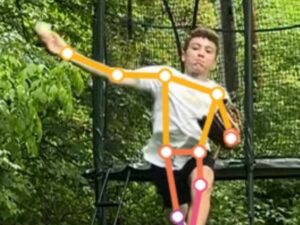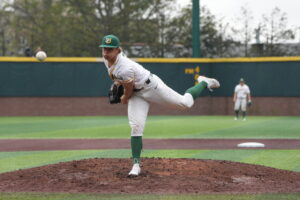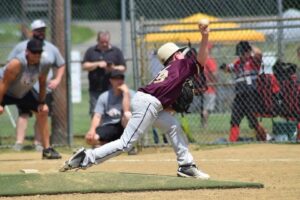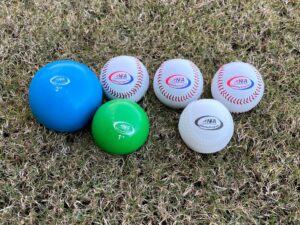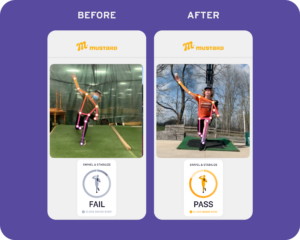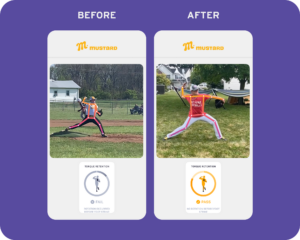Toronto Blue Jays pitcher José Berríos spent part of the 2022 – 2023 offseason working with legendary pitching coach Tom House, cofounder of the Mustard app, and National Pitching Association performance coach Robert Ambrose. The goal was to help Berríos get back on track after coming off the rails in 2022. His stats were not pretty: He led the league with 199 hits allowed and 100 earned runs against, his ERA was a lofty 5.23, and his strike-out percentage dropped to 19.8% from 26.8% in 2021.
House and Ambrose quickly identified a few areas of Berríos’ mechanics to improve – timing, energy angle, head position, drag line – and was able to show Berríos his performance in these mechanical variables in the Mustard app, and track his progress throughout their sessions together. The result? A vast improvement in Berríos’ pitching delivery in those specific areas, increased velocity, and most importantly, an increase in his ability to throw strikes. “José has an incredible capacity to take instruction and turn it into action, and he’s very committed to doing things perfectly,” says House. “We were able to help him improve a lot of things a little, and he’s significantly better than he was last year, but I think he still has more in the tank.”
Through August 1st, Berríos leads the league with 22 games started, and has a 3.31 ERA (16th overall) and 22.9% strike-out percentage.
“We used the Mustard app to analyze and save each pitch video,” says Berríos. “I feel much better when I see room to improve and I know I’m doing it.”
Let’s take a look at the specific areas in which Berríos improved.
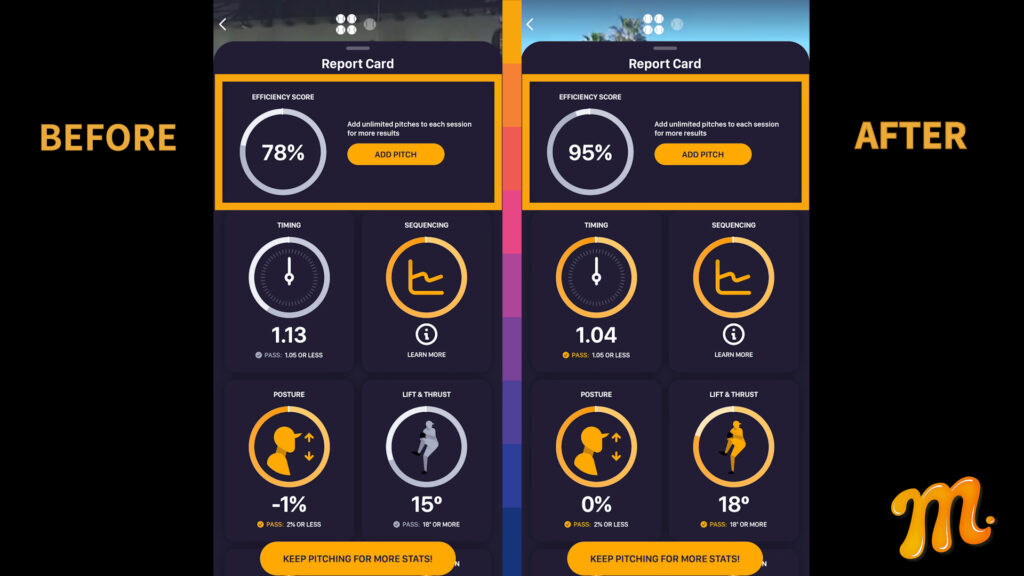
Efficiency Score
Mustard’s Efficiency Score is a cumulative score given based on an athlete’s performance across the 10 mechanical variables of the pitching delivery measured in the Mustard App. Berríos’ Efficiency Score improved from 78% in 2022 to 95% in 2023. This is a direct reflection of his improvement in the individual variables of the pitching delivery. As you can see in his before and after Mustard Report Cards, in 2022, Berríos failed the mechanical variables Timing and Lift & Thrust. Now, in 2023, he is passing those variables.
Timing
Timing is measured from a pitcher’s first forward movement into footstrike. The best throwers in the world typically get from first movement into footstrike in less than 1.05 seconds. The key to throwing hard, easily is to use your legs to go as fast and as far as possible into footstrike. Berríos decreased his timing into footstrike from 1.13 seconds in 2022 to 1.04 seconds in 2023, which is a passing score in the Mustard app. “In the past, José was loading up his back side over the rubber,” says House. “We told him to load up, but to do it on the way out as he was getting his body moving toward home plate. He got further, faster, and his fastball velocity is a mile and half faster than it was a year ago because of it.”
Lift & Thrust
Lift & Thrust is how a pitcher initiates momentum toward home plate. Simply put, a pitcher’s rear end needs to be moving toward home plate the moment the front leg is lifted. This creates an energy angle, measured from the back ankle to the front hip at maximum leg lift, when the body can do nothing but go forward. Ideally, that angle will be over 18 degrees and as close to 25 degrees as possible. The faster a pitcher gets to this energy angle, the faster the pitcher will get to the point where the whole body can only move down the center line from the middle of the rubber to the middle of home plate. Berríos’ energy angle increased from 15 degrees in 2022 to 18 degrees in 2023, which is a passing score in the Mustard app. His bigger energy angle also contributes to his faster timing.
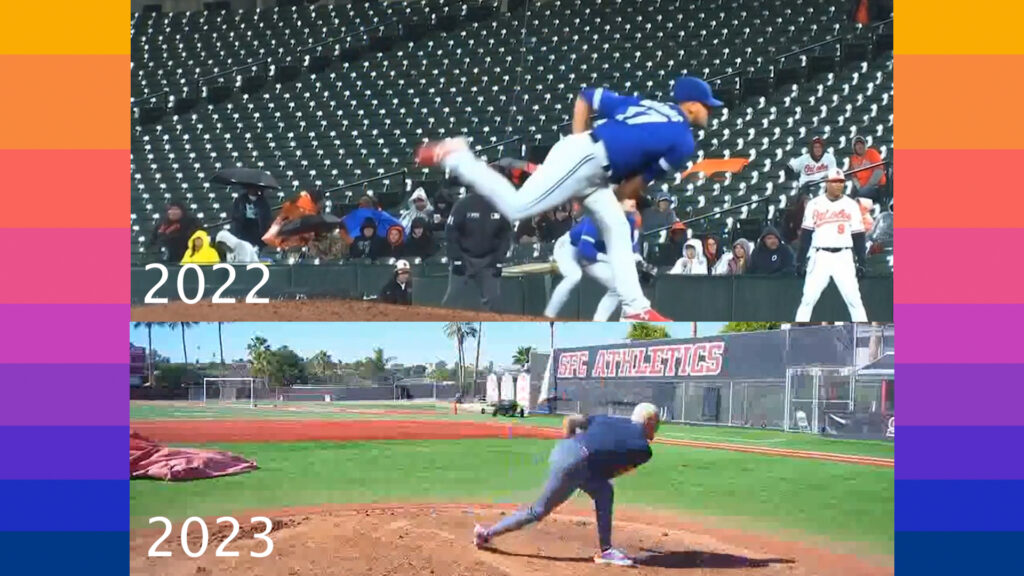
Drag Line
A pitcher’s drag line—the line the back toe creates in the dirt—clearly shows whether or not the body is where it should be during the pitching delivery. Ideally, energy should travel the shortest possible path from the middle of the rubber to the middle of home plate, and a pitcher’s drag line, belly button, spine and nose should all be on that line. If a pitcher’s center of mass is too far to one side, the body has to work harder to get back to the target.
A pitcher’s drag line should be the length of two of his or her feet. If it’s not, it’s an indication that the head is getting ahead of the belly button; the head needs to stay over or behind the center of mass as a pitcher stacks & tracks to throw the ball. If it doesn’t, the back foot will lift off the ground too soon. In 2022, this was clearly happening with Berríos, making it more difficult for him to keep his energy going in the right direction and preventing him from taking advantage of all the torque created in his delivery. “When we’re learning something new, we exaggerate the teach,” explains House. “I told José to keep his back foot on the ground until the ball crossed home plate. It’s a little trick – a small teach – but his body really responded.”
Now, in 2023, his back foot is staying on the ground, creating a whipping effect as his lower back goes from hyperextension into flexion. Keeping both feet on the ground allows him to generate more energy that can be transferred up the chain and into the baseball.
José Berríos, 94mph Fastball and 85mph Slurve, Individual Pitches + Overlay pic.twitter.com/NLP0ob9336
— Rob Friedman (@PitchingNinja) July 30, 2023
Release Point
If every variable is done properly, a good release point eight to 12 inches in front of a pitcher’s landing foot is inevitable. The back foot will be on the ground, the dragline will be the length of at least two of the pitcher’s feet and it will finish on the center line toward home plate. A good release point is dependent on a pitcher’s head staying toward the target, and while Berríos passed the Posture variable in the Mustard app in 2022, it has improved in 2023, indicating that his head is more on-line with home plate. This has resulted in a release point two inches closer to home plate, which will make the ball appear to be moving faster to the batter’s eye.
If you’d like more great content from Mustard, and you’d like to evaluate and improve your own pitching mechanics, download the Mustard pitching app today.

